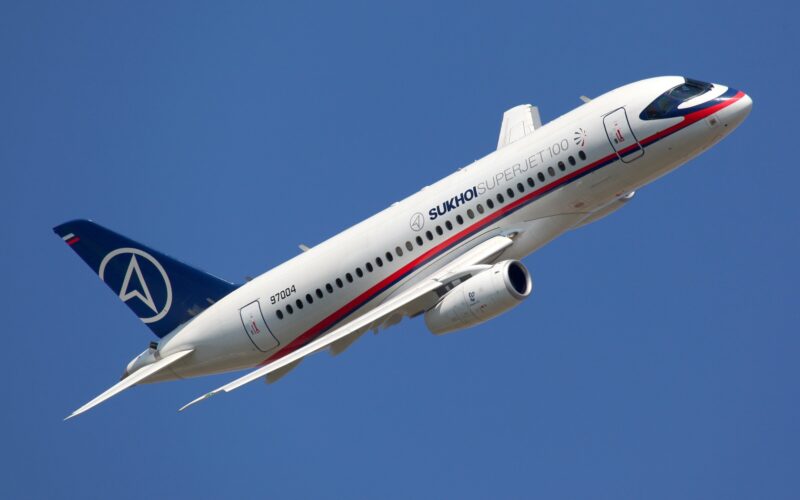Russia will divest from the Sukhoi Superjet 100 program

United Aircraft Corporation (UAC), the Russian state-owned aerospace company, will divest from the Sukhoi Superjet 100 program following an investment from a United Arab Emirates (UAE)-based capital firm, Markab Capital.
According to SuperJet International, an Italy-based company and a now-former subsidiary of UAC, Markab Capital acquired 49% of the Russian company’s shares. As a result, the “UAC shall effectively exit the Superjet Program”, ending its participation in the Superjet 100 project.
SuperJet International was established in 2007 as a company to market, sell, and maintain the Sukhoi Superjet 100 in western markets in Venice, Italy. At the beginning, the Italian company had two shareholders, namely Sukhoi (51% stake) and Italy-based aerospace company Leonardo (49%). In 2016, Leonardo reduced its stake to 10%, giving over the majority of shares to the Russian company, which in 2022, was merged into the UAC.
However, with Russia invading Ukraine in February 2022 and subsequent sanctions imposed upon the country, the Italian Guardia di Finanza (GdF) froze the assets of SuperJet International relating to the 90% stake held by UAC. The GdF froze around €150 million ($159.2 million) of assets, including five aircraft in May 2022.
Going forward, Markab Capital will hold 49% of the shares in SuperJet International, while Italian law firm Studio Guidotti International will hold a 41% stake. Leonardo will retain its 10% stake.
The acquisition and reform of the shareholding structure are pending regulatory approvals from Italian and Russian regulators, which would unfreeze SuperJet International’s assets.
Relaunching the Superjet 100 program
With new shareholders willing to inject capital into the program, the now-Italian company is looking to relaunch the Superjet 100 program, focusing on the UAE and Indian markets.
“This agreement has a great value for our company, as the interruption of industrial and commercial relations with UAC will allow the company to no longer be burdened by the limitations resulting from the sanctioning regulations set by the European Union (EU),” stated Camillo Perfido, the Chief Executive Officer (CEO) of the Italian company.
In total, Markab Capital will invest €190 million ($202.4) million, €110 million ($117.1 million) of which will go to the Venetian company. “Such investment will make it possible to support the development of new aircraft configurations, the construction of the new SJI branch in the United Arab Emirates (UAE), as well as the continuous development of the aircraft to address market competition,” SuperJet International remarked in a prelease.
Once the company is in its “stabilization phase”, there will be 400 employees at its Venice site. The UAE site will add another 400 employees. Currently, the Italian office hosts 110 workers. At the end of 2022, it had 155 employees per the Italian Union of Chambers of Commerce.
According to the release, the company will utilize a site at Al Ain International Airport (AAN), in Abu Dhabi, the UAE, where the Superjet 100 will be produced. The final assembly line, where the “green aircraft” will be completed prior to the delivery, includes activities “for which the Venice site is responsible”. Presumably, those could be related to the sales, marketing, and maintenance of the aircraft.
SuperJet International predicts that it will be able to sell 240 aircraft in three different versions, namely passenger, business jet, and cargo, focusing on the UAE and Indian markets. The Superjet 100 program will be based in Venice and the UAE.
Since being first delivered in 2011, western foreign operators of the Superjet 100 were few and far between, including Mexico’s Interjet, which is now bankrupt, CityJet, an Irish ACMI carrier, and Switzerland-based Comlux. Another four aircraft were delivered to Armavia, Amernia’s flag carrier (one Superjet 100), Lao Central Airlines (one), based in Laos, and Indonesia’s Sky Aviation (three). The Kazakh border patrol and Thailand’s government have taken delivery of specially configured Superjets, with one and three units, respectively.
